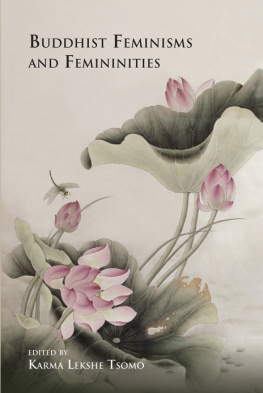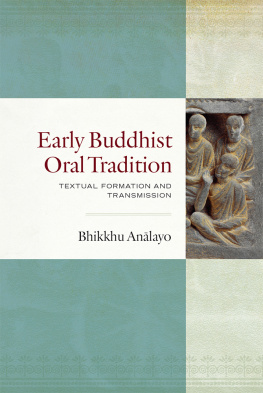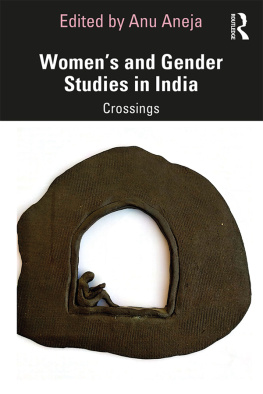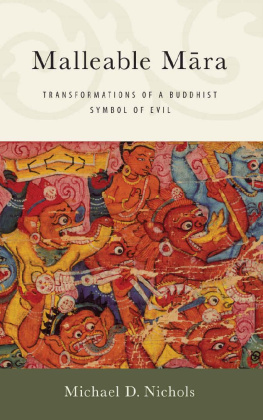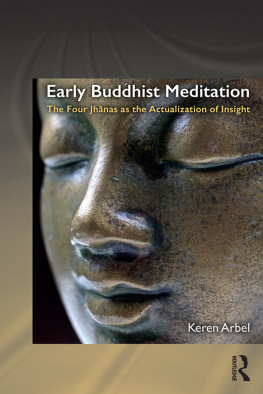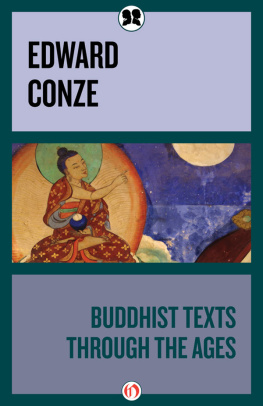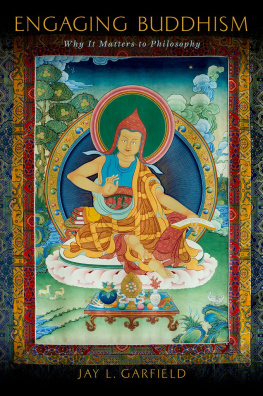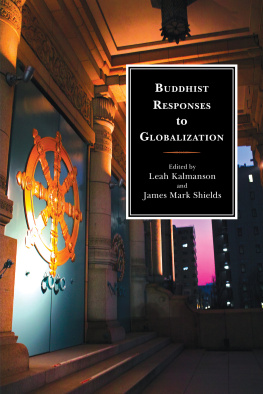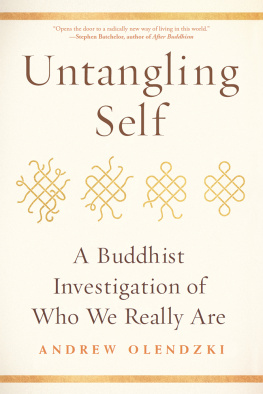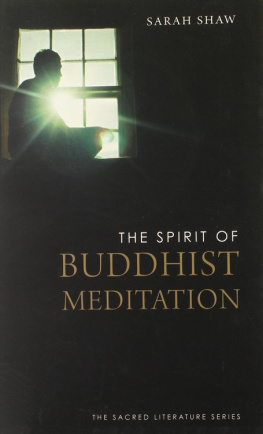Buddhist Feminisms
and Femininities
Buddhist Feminisms
and Femininities
Edited by
Karma Lekshe Tsomo
Cover art by Yue Juan.
Published by State University of New York Press, Albany
2019 State University of New York
All rights reserved
Printed in the United States of America
No part of this book may be used or reproduced in any manner whatsoever without written permission. No part of this book may be stored in a retrieval system or transmitted in any form or by any means including electronic, electrostatic, magnetic tape, mechanical, photocopying, recording, or otherwise without the prior permission in writing of the publisher.
For information, contact State University of New York Press, Albany, NY
www.sunypress.edu
Library of Congress Cataloging-in-Publication Data
Name: Karma Lekshe Tsomo, 1944 editor.
Title: Buddhist feminisms and femininities / edited by Karma Lekshe Tsomo.
Description: Albany : State University of New York Press, 2019. | Includes bibliographical references and index.
Identifiers: LCCN 2018003552 | ISBN 9781438472553 (hardcover : alk. paper) | ISBN 9781438472577 (ebook)
Subjects: LCSH: Women in Buddhism. | WomenReligious aspectsBuddhism.
Classification: LCC BQ4570.W6 B79 2018 | DDC 294.3082dc23
LC record available at https://lccn.loc.gov/2018003552
10 9 8 7 6 5 4 3 2 1
Contents
Karma Lekshe Tsomo
Part I
Buddhist Feminisms: Texts and Communities
Karen Lang
Eun-su Cho
Christine A. James
Ching-ning Wang ( Chang-shen Shih )
Robekkah L. Ritchie
Amy Holmes-Tagchungdarpa
Part II
Buddhist Femininities: Demystifying the Essential Feminine
Lisa J. Battaglia
Matthew Mitchell
Holly Gayley
Michelle J. Sorensen
Jeff Wilson
Karma Lekshe Tsomo
Preface
Language is powerful and words can express more than mere concepts. Since this volume is replete with different cultural heritages that reflect the social evolution of many, widely varied cultures and traditions, the terms used in specific areas of the text remain true to their own traditions. For example, chapters that focus on Theravda traditions use Pli terms, while those that focus on Mahyna traditions use Sanskrit, Chinese, Japanese, Korean and Tibetan. Terms in Pli and Sanskrit may be the same or similar. For example, bhikkhun is the Pli term for a fully ordained nun and bhiku is the Sanskrit, Dhamma is the Pli term for the Buddhist teachings and Dharma is the Sanskrit equivalent, and so on.
Two Fulbright Scholar Awards and numerous Faculty Research Grants and International Opportunity Grants from the College of Arts and Sciences of the University of San Diego have given me first-hand experience and knowledge of the lives and perspectives of women in diverse Buddhist communities around the world. I would like to express my sincere appreciation for these opportunities and for the kindness of all those who have warmly opened their hearts to me.
All the contributors to this volume have been wonderful companions on the path to completion. The editors, my close friends Margaret Coberly and Rebecca Paxton, have shared their skills with exceptional kindness, dedication, and generosity. In a stroke of good fortune, the well-known artist Yue Juan offered the cover art, Lotus Flower from Pond, reproduced from an original brush painting in Gongbi style. The lotus flower symbolizes pure illumined perception arising undamaged from the muck of the world, and is an apt metaphor for womens awakened potential. The smoothly gliding fish, finding their way through constantly shifting circumstances, represent the many fortunate women today who are doing the same. I am deeply grateful to the women who have contributed to this volume and to all women everywhere, throughout history, who navigate through the muck and arise victorious by realizing their true nature.
Introduction
Conceptualizing Buddhist Feminisms and Images of the Feminine
K ARMA L EKSHE T SOMO
T his volume began with a propitious accident. When the Buddhism section of the American Academy of Religion solicited suggestions for topics, I chimed in with the idea of Buddhist feminisms. The following week, when the ideas went out over the internet, I was surprised to see a call for papers on Buddhist femininities, a topic that made no sense to me at the time, so I quickly changed it to Buddhist feminism(s). To my further surprise, waves of innovative proposals poured in on both topics, enough for two conference panels and more. The present collection grew from this felicitous misunderstanding.
The question of Buddhist feminisms and femininities is not a simple philosophical query, or simply a matter of womens personal and social self-perceptions. The question has profound implications for social justicein the home, monastery, workplace, social structures, body politic, and environment. Buddhist feminisms emerge within specific cultural contexts, influenced by unique and diverse social and philosophical factors. It would be a travesty to flatten or distort them to match preconceptions about how feminism can or should be done. While the rich models of feminist thinking that have developed in other texts and contexts are clearly relevant in many ways, such as prompting us to consider the links between economic, environmental, political, and gender justicethe models that have emerged in Western societies may or may not be useful for an analysis
The alternative taxonomies of feminism proposed thus far, liberal as well as radical, are largely products of Western womens experiences and may or may not be useful for Buddhist feminist thinking.
The study of women and gender is now a familiar component of liberal arts education in Europe and North American universities, but it is well to remember that higher education is still limited to privileged elites in much of the world, especially for women. Even if university-educated Buddhist women take an interest in gender issues and are curious to understand how feminist thinking emerged and where it is going, it is unrealistic to expect Buddhist feminisms to be like or look like theories developed in the West. Naturally, Buddhist feminisms, emerging from entirely different cultural, social, and historical contexts, will take their own unique forms. Western feminist thinking may seem tiresomely analytical and largely irrelevant to women struggling for survival and, although it would be foolish to ignore decades of extraordinary reflection, the rejection of feminist ideas remains quite strong in Buddhist societies. If people have even heard of it, feminism is often viewed as an unnecessary and undesirable imposition of foreign cultural mores. The task of exploring Buddhist feminisms is therefore fraught from the onset.
A Buddhist deconstruction of feminism is not a dismissal of the extraordinary scholarly work that feminists have done, nor is it a rejection of critical inquiry. It is simply an attempt to develop different, culturally attuned ways of thinking about gender that do not rely on hyper-analysis and perpetual reflexivity. A range of attitudes toward women can be found in Buddhist literaturevalorizing, denigrating, and often profoundly ambivalentattitudes still evident in Buddhist societies up to today, internalized by women and men alike. The chapters in this volume will engage with these attitudes in representative feminist histories and narratives from Asia. Our hope is that these writings can help us understand Buddhist influences on attitudes toward women and also introduce original expressions of feminist thinking in different parts of the world in ways that may constructively inform contemporary feminist discussions.

